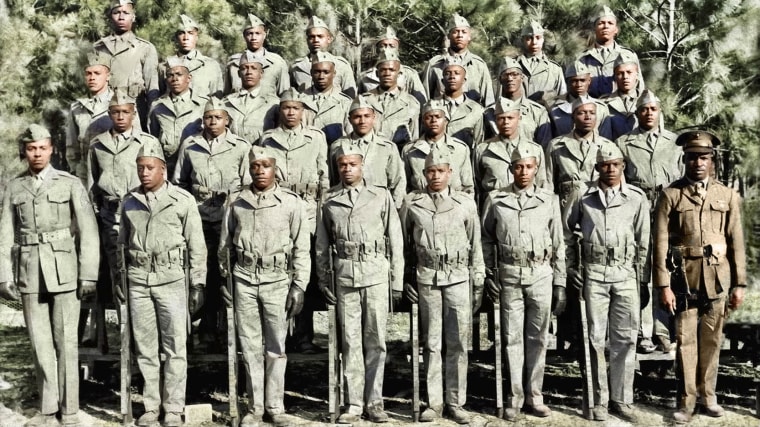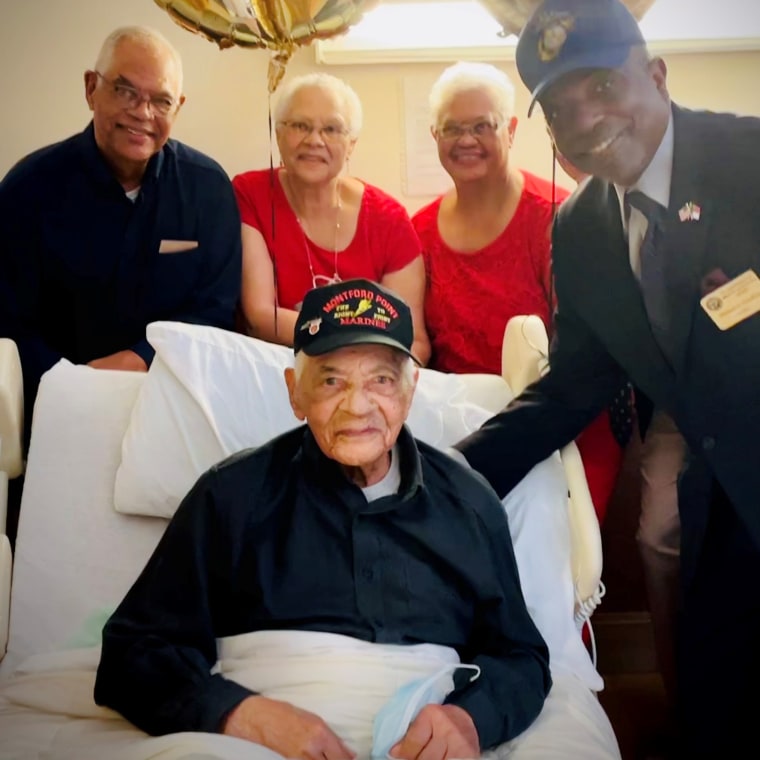Back in 1915, Woodrow Wilson was president and World War I was active. It’s also the year Cosmas Eaglin was born. In January, he celebrated his 108th birthday.
Eaglin — who also happens to be my cousin — grew up during the Jim Crow era in Opelousas, Louisiana, riding segregated train cars and attending segregated schools.
“It was a country town, and that’s it,” he said, “I made the best of it after we got on our feet.”

During his lifetime, Eaglin has witnessed immense change in the United States, as the country transitioned into the civil rights movement and beyond.
But perhaps most notable are his memories of his military service. Starting at the age of 27, he served during World War II, the Korean War and the Vietnam War.
“I stayed in one place all the time, Solomon Islands,” Eaglin said about WWII.
He was also one of the first 300 Black recruits to break the Marine Corps color barrier, after then-President Franklin D. Roosevelt issued an executive order in 1941, which required all branches of the military to formally accept people of color.

By this time, Black Americans had already been serving in every other branch of the military, but the Marines were the last to officially integrate African Americans into their ranks.
Eaglin headed to Montford Point, a segregated base in North Carolina, shortly after the executive order was signed to complete his training.
Even with this development in the armed forces, Black men in the Marine Corps were not trusted with being on the front lines or in active battle. Instead, many of them worked to transport materials, cooked or helped with logistics.
Eaglin said obedience was key.
“Whatever they told you to do, that’s what we did.”
During the 1960s, Eaglin completed two tours in Vietnam.
“We didn’t know what was going to be next, that was always the worry, you know?” he said about his time overseas, “I’d come back to Fort Bragg after I served that time in Vietnam.”
Of the 16 million Americans who served in WWII, only about 167,000 were still alive in 2022, according to the Department of Veterans Affairs. Eaglin is among this shrinking group of veterans who hold so much history and knowledge.

He said progress within the Black community has varied during his lifetime.
“It’s up and down. If you made good for yourself, it was good.”
“We got a lady that’s vice president of the United States, that’s a lady — one of our ladies. That’s a big deal.”
And as for advice for living a long life, “Wait and see what tomorrow is going to bring,” Eaglin said, “there’s no use in wasting time.”
